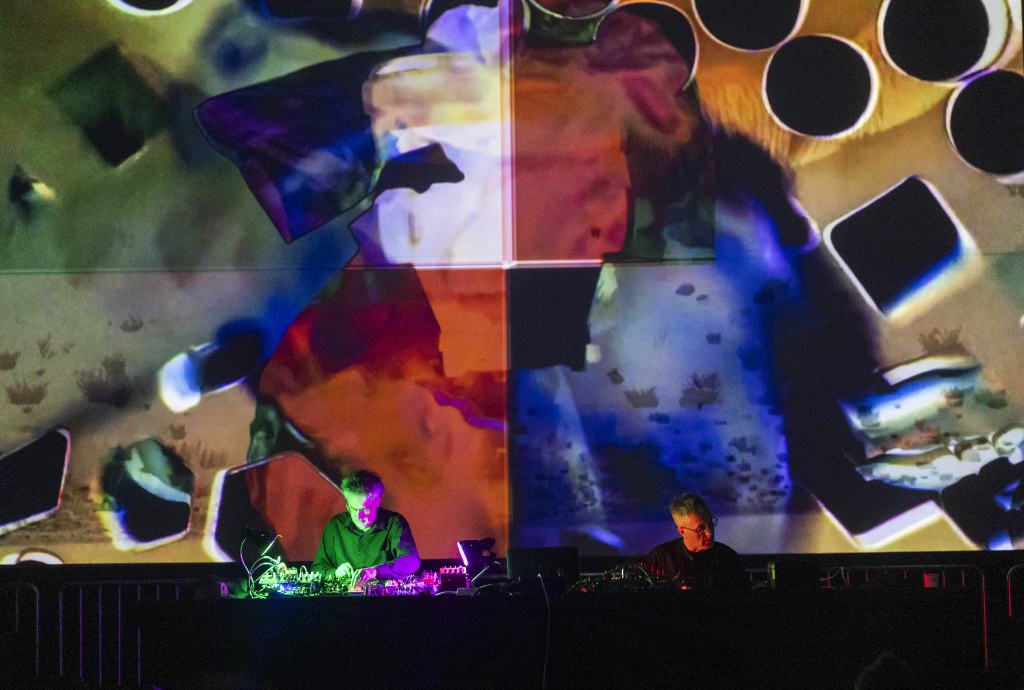Text by Daniel Melfi
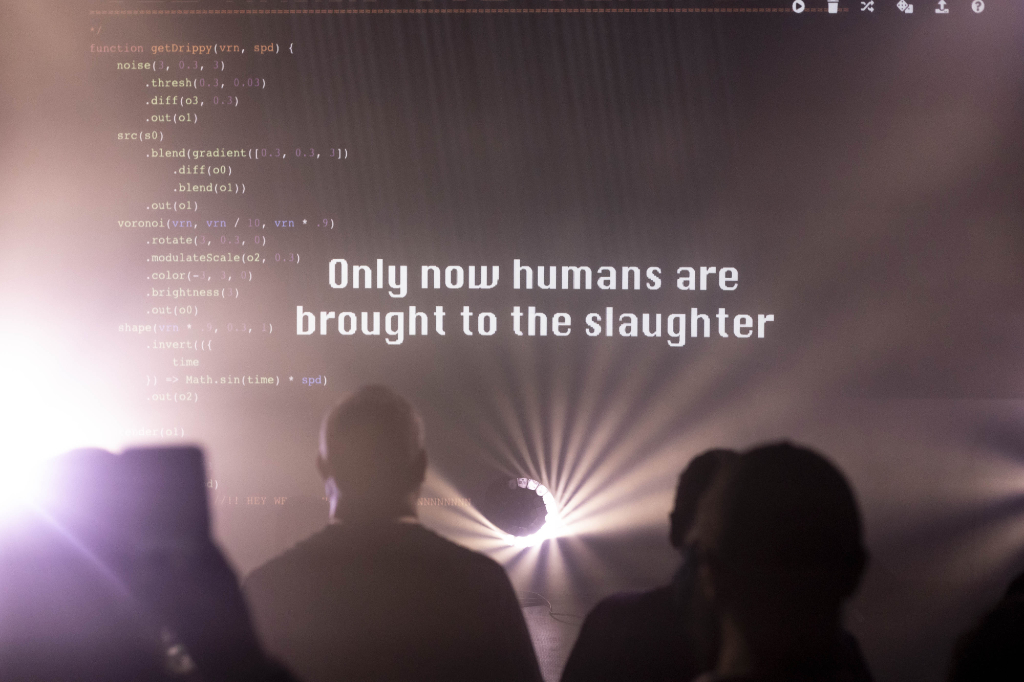
Acknowledging the interwoven nature of the culture and technology industries, Unsound Festival turned to Dada—the early twentieth-century art movement—as its guiding theme this year. The 2023 edition of the Krakow-based music festival was its twenty-first and persisted in challenging the status quo of what a festival can program—and how.
Artistic director Mat Schulz and curator Małgorzata Płysa said in their opening speech that it doesn’t really get any easier organising a festival, even after many years. This time, at least part of the responsibility of their curatorial decision-making was shifted onto the shoulders of AIAD, their artificially intelligent co-artistic director. Ruminating on the context of ready-made reviews, I turned to ChatGPT to help clarify some of the context of Dada and the festival. According to the A.I. program, Dada is:
An artistic and cultural movement that emerged in the early 20th century, primarily during and after World War I. It was a response to the disillusionment and chaos of the time, with its roots in several European cities, including Zurich, Switzerland, and Berlin, Germany. Dada was characterised by its rejection of traditional artistic conventions and a desire to challenge and disrupt established norms.
Key features of the Dada movement include:
1. Anti-Art: Dadaists often created works that deliberately defied traditional artistic techniques and aesthetics. They sought to undermine the idea of “high art” and often used unconventional materials and methods.
2. Absurdity and Nonsense: Dada art frequently employed absurd and nonsensical elements, including random and irrational combinations of words and images. This was a way to challenge the rationality and order of the world.
3. Political and Social Commentary: Dadaists were often critical of the social and political systems that had led to the devastation of World War I. They used their art to make satirical and provocative statements about these issues.
4. Collage and Assemblage: Dada artists often used collage and assemblage techniques, combining found objects and materials to create new and unexpected compositions.
5. Performance: Dada also included performance art and live events that often involved chaotic and nonsensical elements. These performances were meant to shock and challenge the audience.
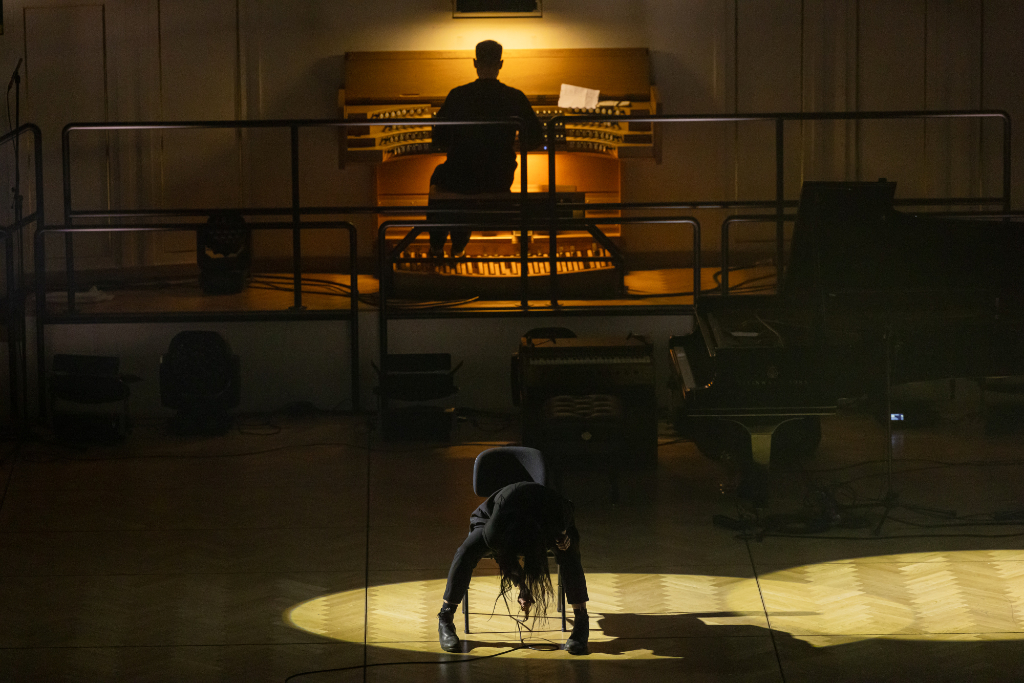
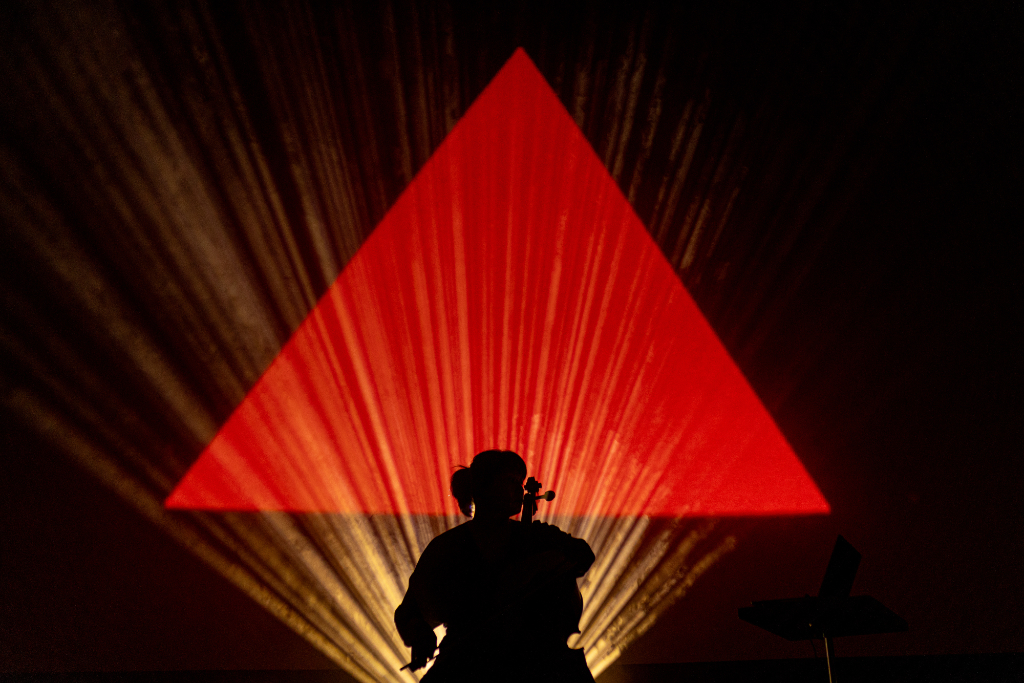
The parallels between the postwar disenfranchisement of the Dadaists—with the state of Europe after the irrational destruction of WWI and the classist stratification and elitism of the values of European classical art—and that of artists and spectators today appears quite clear to me.
That perspective remained as clear throughout the festival. There is a particularly pessimistic and often ironic tone that seems to permeate so much of the art made in response to our contemporary society. It certainly seemed that way at Unsound. Highlights at this year’s edition remained more elusive than during past festivals, but it wasn’t without its memorable moments, even if some of them came in unexpected formats. Sometimes, such interventions were proposed by the A.I. curator, such as a magic show at Krakow’s Philharmonic Hall.
Comical reprieve aside, the evening concert on Wednesday at the Philharmonic Hall proposed the festival’s most thoughtful performances. One of those came courtesy of Unsound’s commission (originally for its Warsaw-based Ephemera Festival) of new work by Polish composers Teoniki Rożynek and Aleksandra Słyż. The performance, featuring baritone and mezzo-soprano singers along with the six-piece brass ensemble of Spółdzielnia Muzyczna, weaved through pieces exploring stillness and breath, splicing almost silent moments and full, if eery, crescendos in a narrative value unmatched throughout the week.
It was followed by a striking duo of singer Keeley Forsyth and Matthew Bourne, who played the hall’s large and affecting organ, along with harmonium and grand piano, highlighting the space’s acoustic capacity and providing another example of how Unsound sets itself apart as a festival by presenting work in a long list of different venues typically not offered to experimental musicians of such a bent.
Most of the rest of the festival went according to plan, meaning that Schulz didn’t have to blame either the tradition of Dada or A.I., as he’d claimed the team would be able to if necessary. Rather, this twenty-first edition turned out roughly as expected: a meandering collection of performances, screenings, discussions, interventions and parties that proved there is still room for a unified multiplicity of approaches to experimentation in the face of increasingly polarised—and absurd—accelerationism on and offline.
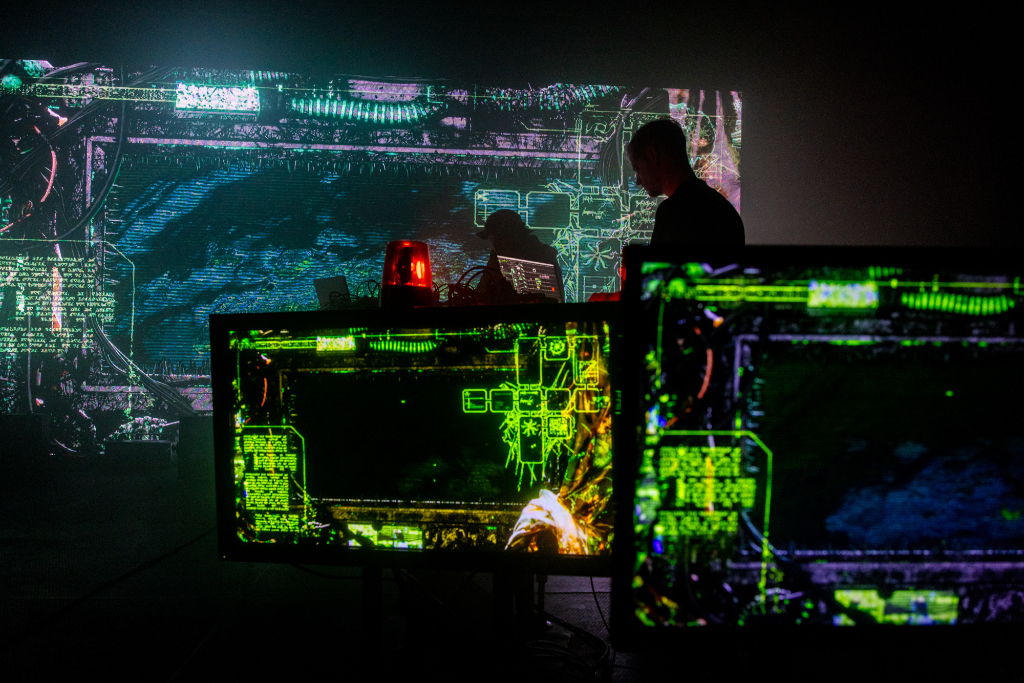
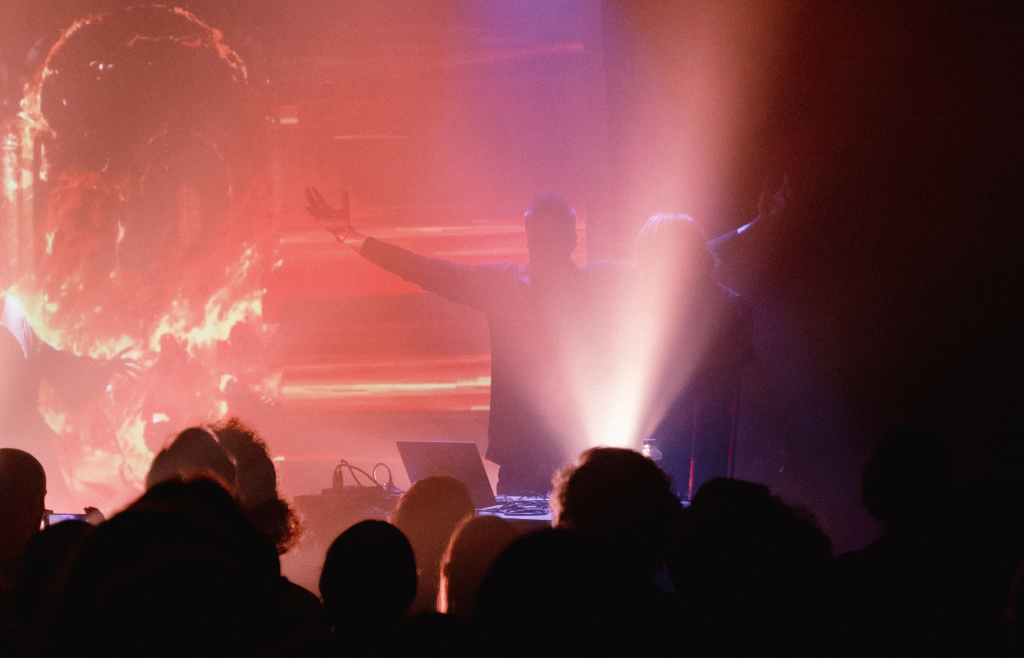
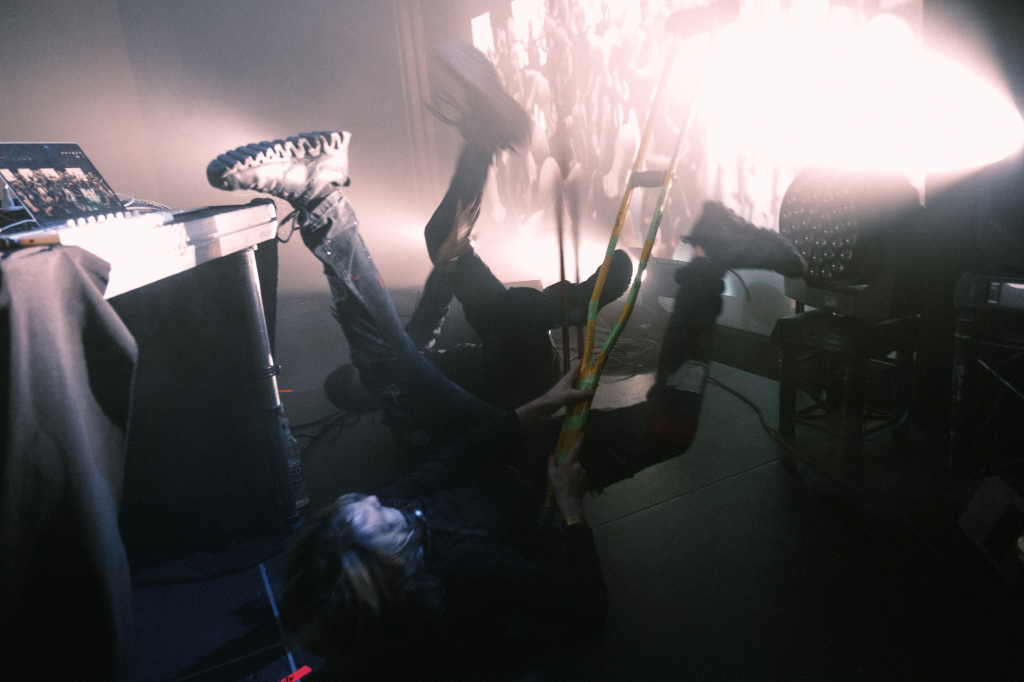
There were moments which conferred this more than others. Some that come to mind are discussions and presentations such as that by members of the Milan-based collective of “psycho-activists aimed at organising forms of occult resistance” known as Gruppo di Nun and the improvisations of Korean cellist Okkyung Lee alongside silent film screenings of early experimental films by Hans Richter and Fernand Léger.
Unsound, as long as I’ve known it (from 2015 until now, between Toronto and Kraków), has always sought to meld interdisciplinary arts with a strong curatorial perspective, often digging into a theme not superficially but quite literally—puns about their concerts in the Wieliczka salt mine notwithstanding. The presence of the absurd à la Dada, as well as handing over the controls to A.I., was not a curatorial bluff. There was plenty of artificial intelligence present, whether through performances by the Dadabots or regular interruptions in the programming to give stage time to various AI-driven projects.
Ultimately, it’s the consistent championing of Polish multimedia artists, musicians and composers that retains Unsound’s value to its audience, at least those coming to Krakow from abroad. This year, more examples of that commitment presented themselves in the form of Julek Ploski, Martyna Basta and Robert Piotrowicz.
Returning my focus to my dedicated and studiously bookish colleague, ChatGPT, I inquired as to what a “festival highlight” is supposed to look like:
A festival highlight refers to a particularly memorable or outstanding aspect or event within a festival. Festivals often feature a variety of activities, performances, attractions, and experiences, and some of these may stand out as the most exciting, impressive, or noteworthy parts of the festival. Examples of festival highlights might include:
1. Headlining musical performances by popular artists.
2. Spectacular firework displays.
Festival organisers often promote these highlights to attract attendees and generate excitement about the event.
It’s rarely the big bookings that render Unsound what it is as a festival. Luckily that characteristic has the ability to render the festival an overall success even if it lacks stand-out moments, especially the ones that seem to be planned by considering the above description. The appearance by British electronic duo Autechre seemed to fall into the above category. The headlining performance by Ben Frost also fell into that description when the Australian/Icelandic artist was forced to end his show with guitarist Greg Kubacki and Tarik Barri as a result of technical difficulties.
In a way, it recalls what Enrico Monacelli said during the presentation of the work of Gruppo di Nun regarding the three central themes he encountered in his work: love, entropy and extinction. It’s not hard to see parallels to running a music festival with such ambitious programming. At some point, all of these concepts converge, like the organisers, artists and audiences trying to balance the inevitable confluence of these three themes, none present without the other, trying to make the best of difficult situations. Dadaists seemed to understand it. We do as well. The question for now is: does A.I., too?

